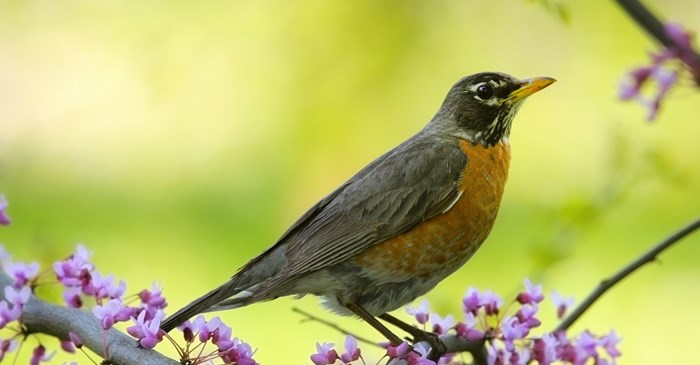For the first time in my college career, I have lived off campus this year. I live on Center Street, and while living off campus affords me a bigger room and my own personal laundry services, it also necessitates quite a walk to class. As a relatively poor college student, I declined to pay extra for a commuter parking pass (a parking pass which is so limited in the parking spots it affords you it is hardly worth the money) and as such I walk to class, rain or shine. I wholeheartedly endorse a walk to class; the time spent outdoors invigorates the mind and body in a way that a morning commute in a car cannot.
Ever since Spring began and the trees began to flower again, my morning walks have been scored by the sounds of birds calling to each other in the trees lining the street. It is common to hear the songs of the American robin (Turdus migratorius) and the downy woodpecker (Picoides pubescens) from the trees in the morning, and I’ve become familiar with the sights and sounds of many of the birds that live in Geneseo. The robins can be seen scavenging for insects and earthworms in the front yards of the houses on Center Street, and are largely unconcerned with the passersby on their way to class.
The birds of Center Street talk all morning with each other, communicating in ways that we can only truly guess at. For all the scientific analysis in the world, we’ll never truly know what one bird said to another from the power lines bounding Center Street. From the tops of trees and the powerlines these birds call out to the world, and I can’t help but think of it as an avian social network, a community forum of sorts for birds.
Twitter is the obvious comparison, low-hanging bird pun aside. The birds calling reminds me more however, of our earliest examples of social networks. The power lines and trees of Geneseo constitute the bird equivalent of the free-for-all group chats like those previously found on Echo. Early social networks could seem like users screaming their thoughts into the world to be heard by whoever happened to be online, and this social network of birds that spans my walk to work seems no different to me. This comparison is only strengthened by the birds’ habit of sitting either on power lines or the trees lining Center Street; the power lines which carry the electricity needed to power our own social networks and the trees which inspired the very shape of the internet that allows us to socialize.
There is, of course, a more rational and scientific explanation for the bird songs on Center Street. April is the beginning of many common birds’ mating season, and many of the calls I hear are likely efforts to find a suitable mate (perhaps not so different than Twitter after all). As it is wont to do, nature returns to the four F’s (ask your favorite biology professor to explain). It is however, I think, more enjoyable to think oneself surrounded by social discourse than surrounded by these calls for a mate.

